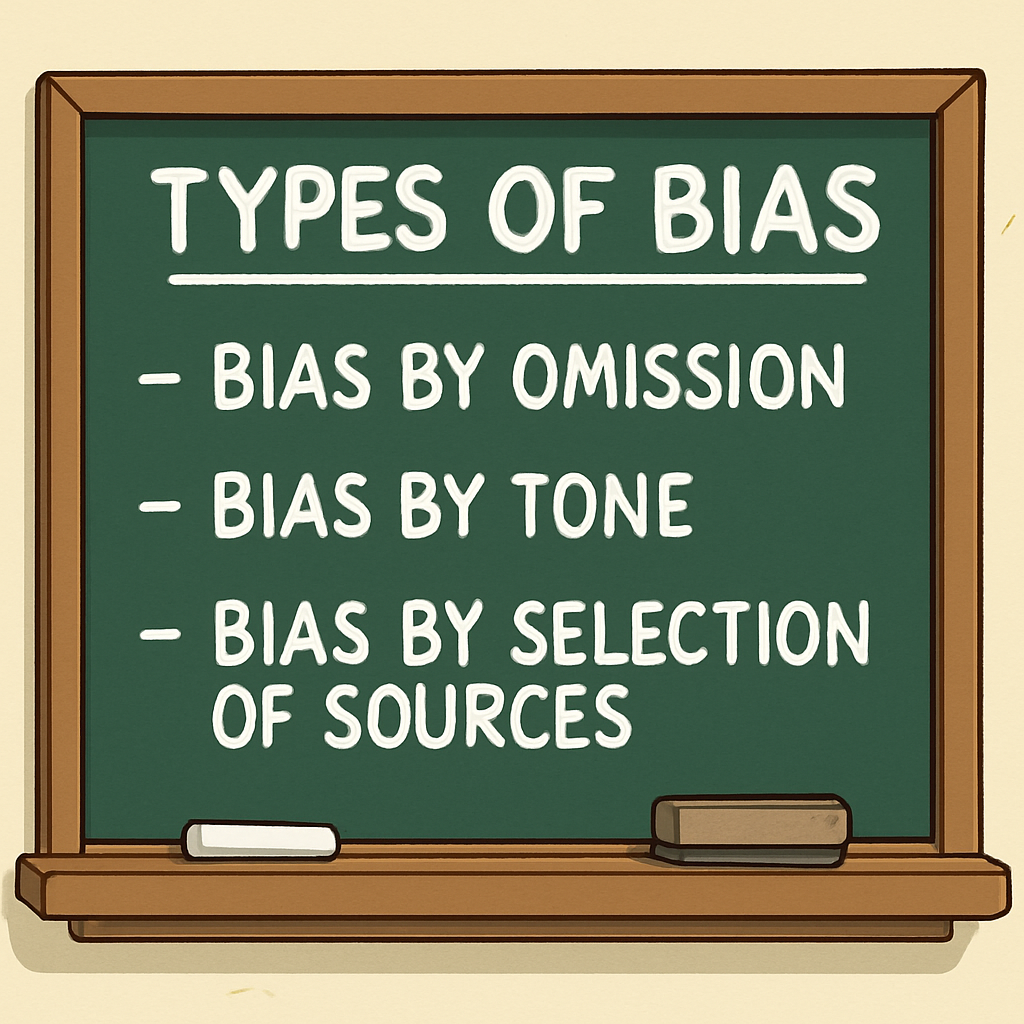 Understanding Bias in Digital Content
Understanding Bias in Digital Content
Bias occurs when information is presented in a way that favours one particular viewpoint or opinion, often without providing a complete or balanced picture. For instance, imagine a review of a video game that only highlights its positive features to encourage you to purchase it, while ignoring any drawbacks.
Recognising bias is essential because it can make information less reliable. It helps you determine whether a source is fair and trustworthy, enabling you to make informed decisions. By the end of this lesson, you will be able to identify signs of bias and understand its impact on the credibility of online content.
Let us begin with a clear definition: Bias refers to a preference or prejudice towards or against a particular idea, group, or perspective, which can influence how information is shared. An example might be a news article that only presents the opinions of one political group, while overlooking opposing views.
Bias can appear in various forms online, such as in articles, social media posts, or advertisements. Learning to spot it will improve your ability to evaluate information critically.
 Objective vs Subjective Content
Objective vs Subjective Content
In this section, we shall examine the distinction between objective and subjective content. Understanding this difference is crucial for identifying bias in digital media.
Objective content is grounded in verifiable facts, remains neutral, and presents information in a balanced manner. It avoids personal opinions or emotions. For example:
"My Heart Will Go On by Celine Dion is the best-selling song of all time."
This is an objective statement because it is based on measurable sales data from official music charts and record companies. The sentence doesn't express any personal feelings about the song—it simply states a fact that can be confirmed.
In contrast, subjective content is influenced by personal opinions, feelings, or interpretations. It may reflect bias as it promotes a particular perspective. Consider this example:
"Espresso by Sabrina Carpenter is the best song of all time."
This is a subjective statement because it reflects someone's personal taste. There is no universal or factual way to prove that it's the best song—this is a matter of opinion and individual preference.
Now consider how headlines can also show the difference:
Let’s apply the same thinking to a historical example:
 Exploring Different Types of Media Bias
Exploring Different Types of Media Bias
Bias can manifest in various forms within media content, influencing how information is presented and perceived. It is important to recognise these forms to evaluate the reliability and fairness of sources. In this section, we shall examine three common types of media bias, each illustrated with examples to enhance your understanding.
Bias by Omission
This type of bias occurs when key facts or perspectives are deliberately excluded from a report, resulting in an incomplete portrayal of the subject. For instance, a news article about a public protest might detail the number of participants and the disruption caused, but fail to mention the underlying reasons for the protest, such as social injustices or policy concerns. This omission can skew the reader's perception, making the event appear chaotic without context.
Bias by Tone
Bias by tone involves the use of emotive or loaded language that influences the audience's emotions rather than presenting information neutrally. Such language can subtly persuade readers towards a particular viewpoint. An example is describing a government policy as 'disastrous' and 'reckless' instead of providing a balanced account of its potential benefits and drawbacks. This approach can evoke strong negative feelings, overshadowing objective analysis.
Bias by Selection of Sources
This form of bias arises when sources or quotations are chosen selectively to support one side of an argument, while opposing views are ignored. For example, a review of a new mobile application might include enthusiastic endorsements from satisfied users and developers, but exclude feedback from critics who highlight technical flaws or privacy issues. Consequently, the content appears overwhelmingly positive, potentially misleading the audience.

Spotting Bias in Headlines
Headlines serve as the initial point of contact with news articles and can significantly influence your perception of the content. However, they may contain bias, which can distort the information presented. In this step, you will practise analysing headlines to identify signs of bias, such as emotional language, exaggeration, or one-sided perspectives. Developing this skill will enable you to evaluate the reliability of media more effectively.
Consider the following headlines carefully. For each one, determine whether it is biased or unbiased. Look for indicators of bias, including words that evoke strong emotions, make unsubstantiated claims, or present information in an unbalanced manner. Unbiased headlines typically report facts neutrally, without attempting to sway the reader's opinion.
Here are the headlines for analysis:
To guide your analysis, ask yourself these questions: Does the headline use factual language or emotive words? Is there evidence of exaggeration or a clear preference for one viewpoint? Does it omit important details that might provide balance?
For instance, a headline like 'Brilliant New Phone Changes Everything!' employs enthusiastic and hyperbolic language ('brilliant' and 'changes everything'), which suggests bias by tone, as it promotes the product without objective evidence.
 Transforming Biased Sentences into Neutral Statements
Transforming Biased Sentences into Neutral Statements
In this step, you will practise rewriting biased sentences to make them neutral and objective. This exercise is important because it helps you understand how to recognise and correct bias in written content, enabling you to create or identify more balanced and reliable information. By removing emotive language, exaggerations, and personal opinions, you can present facts in a fair manner that allows readers to form their own conclusions.
Recall that biased sentences often include loaded words that express strong feelings or judgements, such as 'lazy', 'stupid', or 'amazing'. These words can influence the reader's perception unfairly. In contrast, neutral sentences focus on verifiable facts and use balanced language without emotional bias.
Here is an example to illustrate the process:
Biased sentence: 'Lazy kids are ruining society with their constant gaming.'
Neutral rewrite: 'Many children spend a significant amount of time playing video games, which may have various effects on their daily lives and society.'
In this rewrite, emotive words like 'lazy' and 'ruining' have been replaced with neutral terms such as 'significant amount' and 'various effects', providing a more balanced view without imposing a negative judgement.
Now, apply this approach to the following biased sentences. Your task is to rewrite each one to make it neutral, ensuring that you eliminate any subjective language and focus on facts.
When rewriting, consider these guidelines: